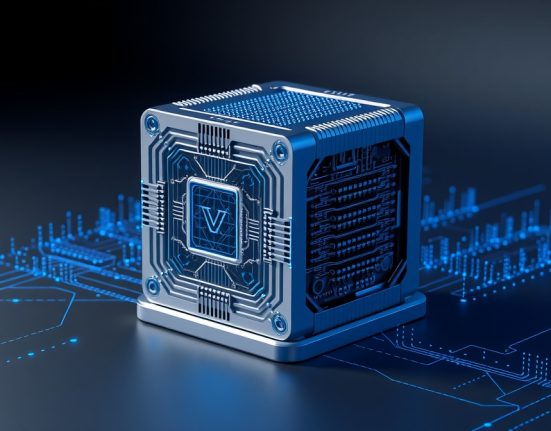Amazon Web Services has developed their first quantum computing chip, named Ocelot. This innovative chip demonstrates a more efficient approach to quantum error correction – one of the fundamental challenges in building practical quantum computers.
The Architecture Behind Ocelot
The Ocelot design features nine qubits on a square centimeter silicon chip. What makes this architecture unique is its hybrid approach: five of these qubits are “cat qubits” (named after Schrödinger’s thought experiment), while the remaining four are transmon qubits.
In this arrangement, cat qubits store information while transmon qubits monitor them. This differs significantly from the transmon-only designs used by other major players in quantum computing.
The cat qubits consist of hollow tantalum structures containing microwave radiation, integrated with a silicon chip. Like all quantum computing hardware, Ocelot must operate at temperatures near absolute zero.
Solving the Error Correction Problem
Quantum computers are inherently error-prone, and developing effective error correction is crucial for practical applications. Traditional approaches to quantum error correction demand substantial hardware resources – Google recently required 105 qubits to encode a single error-corrected bit of quantum information.
Ocelot’s key innovation lies in its more efficient error correction design. According to Oskar Painter, head of quantum hardware at AWS, their approach requires only about one-tenth the number of qubits per information bit compared to conventional methods.
In research published in Nature, AWS researchers demonstrated this efficiency by encoding a single error-corrected bit of information using just Ocelot’s nine qubits.
How It Works
Quantum computing errors fall into two categories: bit-flip errors (similar to those in conventional computing) and phase-flip errors (unique to quantum systems).
According to Shruti Puri, a physicist at Yale University not involved in the work, the cat-transmon hybrid design allows engineers to create a system where errors are predominantly phase-flip errors. This enables the use of simpler error correction algorithms that require fewer qubits.
AWS’s implementation of the C-NOT gate operation (crucial for error correction) is particularly noteworthy. Their design ensures this operation doesn’t disproportionately introduce bit-flip errors, allowing the simplified error correction approach to remain effective through multiple cycles.
Development Challenges and Future Direction
AWS began work on Ocelot around 2021, facing significant engineering challenges. One major hurdle involved developing new techniques to grow tantalum on silicon chips with minimal atomic-scale defects.
Currently, Ocelot functions primarily as quantum memory rather than a full computing system. The next development steps will include adding more qubits, encoding additional information, and performing actual quantum computations.
Scaling remains a significant challenge, from connecting the necessary wiring to linking multiple chips together. Industry experts predict that practical quantum computers will ultimately require thousands or millions of qubits.
This project represents a strategic shift for AWS. While they previously focused on conventional transmon qubits similar to competitors, they’ve now prioritized the cat qubit approach as their main engineering effort going forward.
The French startup Alice & Bob is also developing quantum computing technology based on cat qubits.













